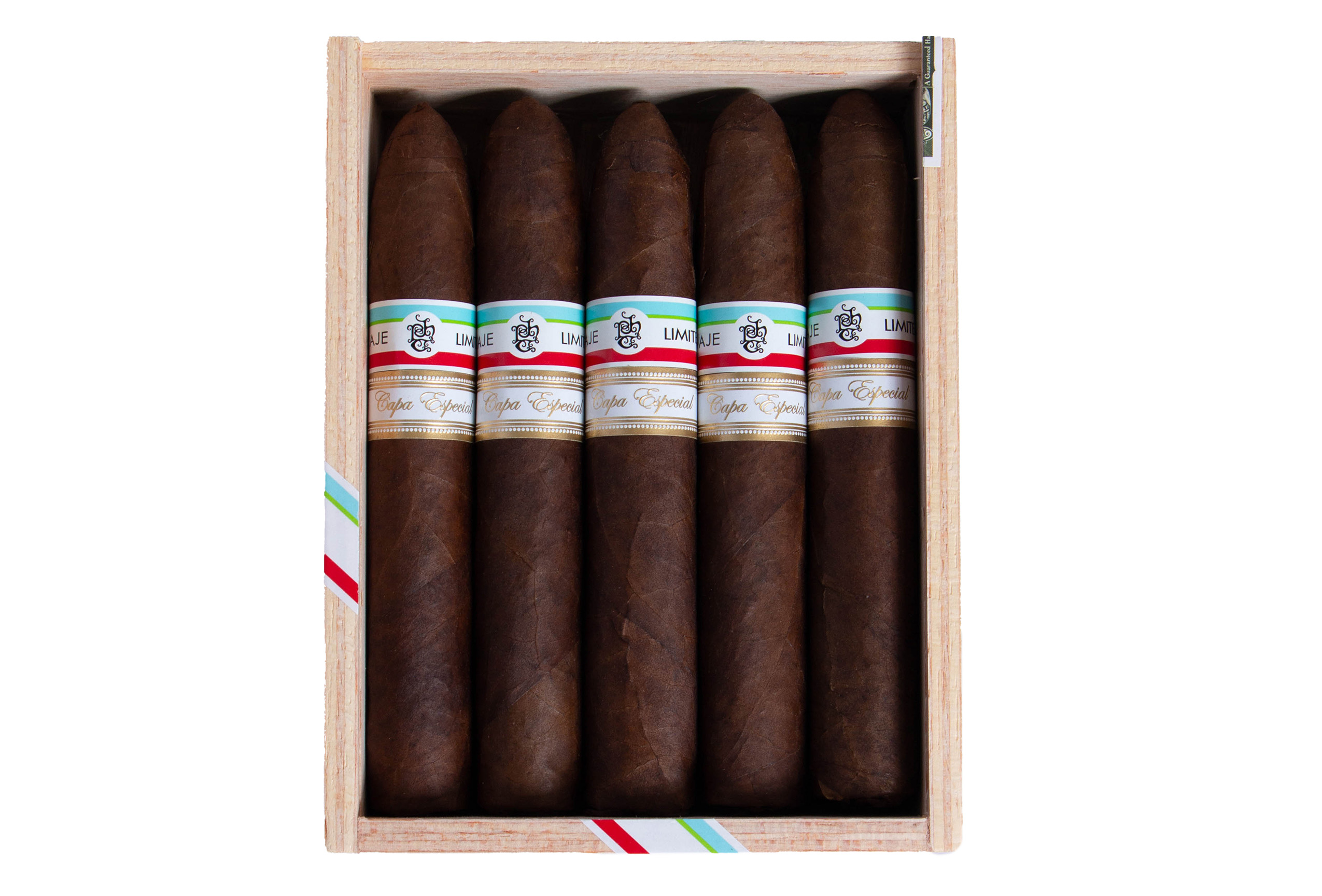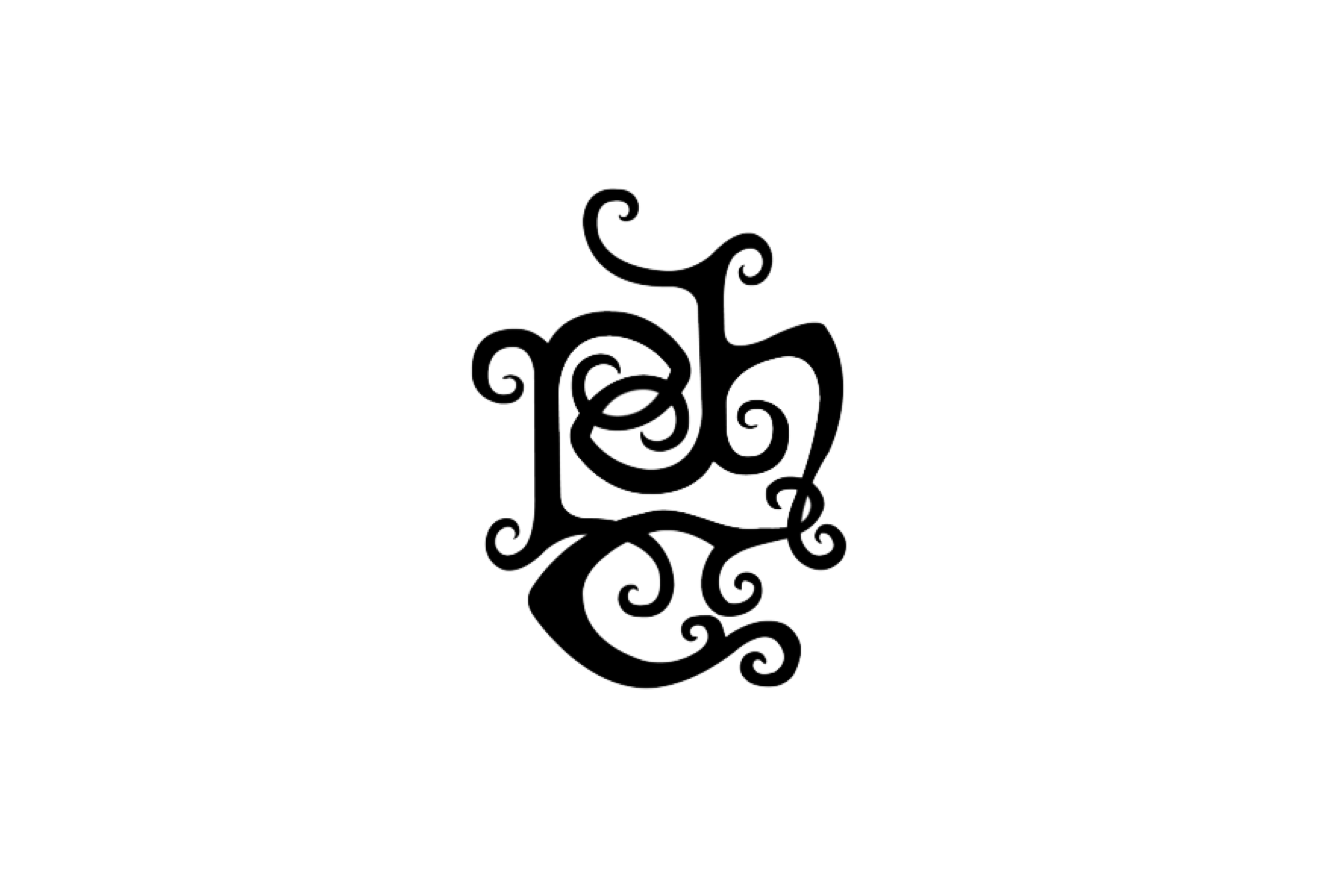Over the last few years, Tatuaje has reached into its extensive archive of past limited edition cigars and rereleasing them, sometimes using the same recipe as before, and other times switching things up.
When the latter takes place, it’s usually in the form of replacing the original wrapper with either Connecticut broadleaf, Ecuadorian Sumatra, or—most recently—Mexican San Andrés tobacco. In Tatuaje naming parlance, these cigars get referred to as Reserva, Capa Especial, or Tuxtla, respectively. While the Tuxtla is a relatively new development and the Reserva band that signifies a Connecticut broadleaf is a longstanding Tatuaje tradition, the Capa Especial history is unique.
According to our archives, we reviewed the Bombazo Capa Especial in November 2012, but the next post to be published that mentioned a Tatuaje Capa Especial doesn’t appear until February 2021, a mere 3,022 days apart. The more than eight-year gap is rather peculiar, particularly since it wasn’t like Tatuaje stopped using Sumatra wrappers during that time.
But in the last two years, Tatuaje has released a handful of cigars with the Capa Especial secondary band. This includes the Tatuaje LLE Capa Especial—a cigar previously known as the NHC Capa Especial—and then new versions of the Cohete and T110—both previous limited editions not offered with Ecuadorian Sumatra wrappers—using the Sumatra wrapper and the Capa Especial secondary band.
Note: The following shows the various Tatuaje Tobacco Plaza vitolas. Some of these cigars may have been released after this post was originally published. The list was last updated on Dec. 5, 2022.

85
Overall Score
While not the best Tatuaje I’ve ever smoked, the first two thirds of the Tatuaje Limited DB Capa Especial were enjoyable. For a number of reasons—flavor, ring gauge, price—I’d prefer the LLE Capa Especial and T110 Capa Especial over the positive parts of the Tatuaje Limited DB Capa Especial, but the first half or so of this cigar was quite good. However, even at its best, the final third was a notable letdown. Unfortunately, two out of three times, the final third ended about as bad as I’ve ever tasted from a Tatuaje. I have smoked a lot of Tatuajes over the years—this is the 49th review of a Tatuaje/L’Atelier cigar—and based on my experiences, the bar that the company has established is about as high as any company. When there has been an occasional miss, it’s almost always tied to a glaring construction issue—usually a draw issue—that then impacts the flavor and the score. In this case, there certainly weren’t glaring construction issues prior to the final third, and even when the issues started, they seemed relatively minor, at least as far as construction was concerned. However, I can’t help but think there was a lot more going on underneath the surface—i.e., within the filler itself—because very few cigars can flip a switch quite like these did. The good news is, the harshness and bitterness weren't a problem until close to the end; unfortunately, getting to the end without them becoming overwhelming wasn't possible.
The latest limited edition Tatuaje to get a new release with the Capa Especial secondary band and the accompanying wrapper is the Tatuaje Tobacco Plaza DD, a cigar originally released in March 2012 to honor the 40th anniversary of Tobacco Plaza, a cigar retailer in Great Neck, N.Y. The original version was a beefy 6 x 58 torpedo that used a Connecticut broadleaf wrapper over a Nicaraguan binder and fillers. It was described as a cigar based on the T110/Fausto blend—which uses an Ecuadorian habano wrapper—but with a Connecticut broadleaf wrapper.
For Tobacco Plaza’s 50th anniversary in 2022, another 5,000 cigars were sold through Tobacco Plaza, while about 60 stores got access to the Tatuaje Limited DB Capa Especial, which replaced the Connecticut broadleaf wrapper with an Ecuadorian Sumatra leaf.
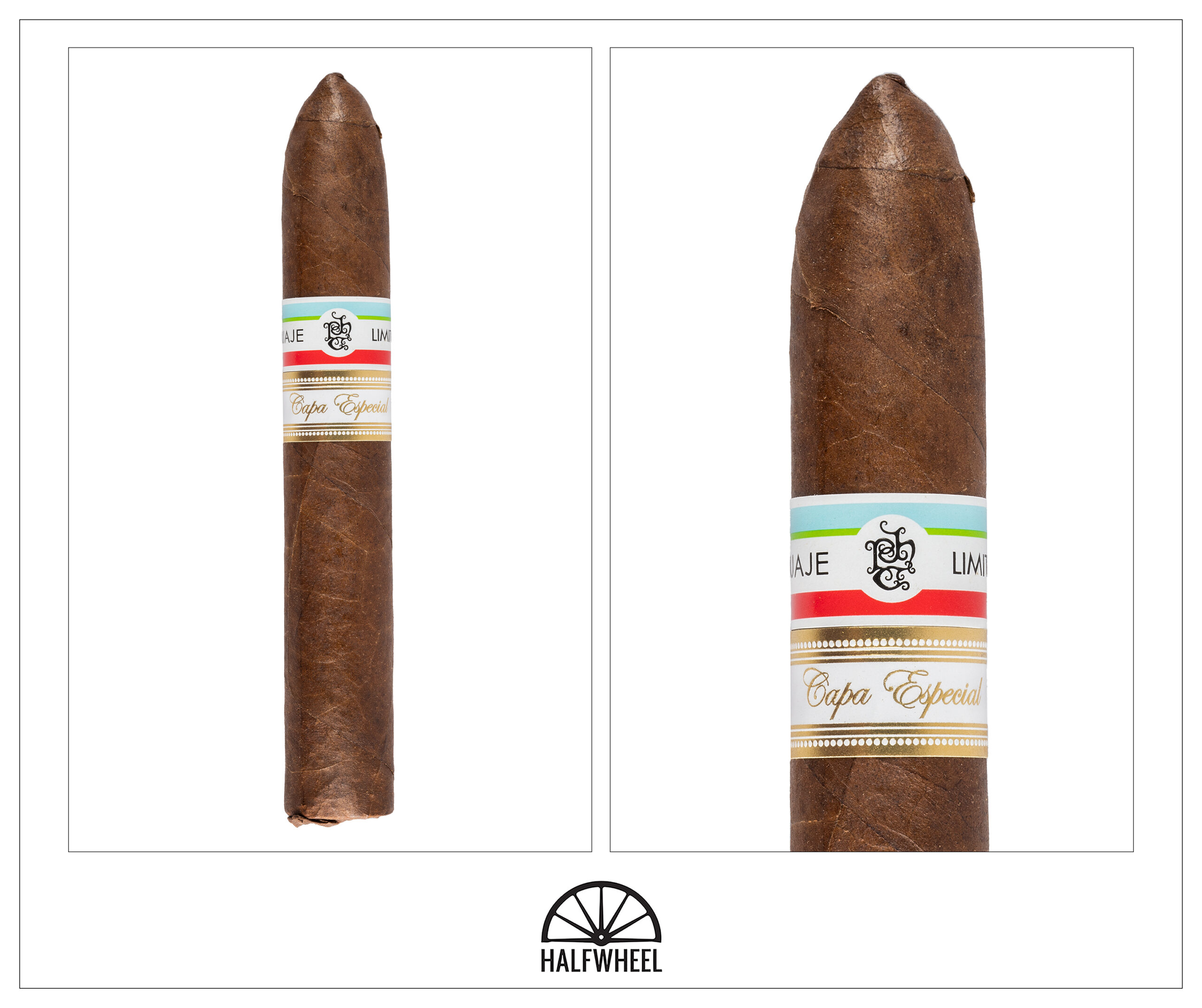
- Cigar Reviewed: Tatuaje Limited DB Capa Especial
- Country of Origin: Nicaragua
- Factory: My Father Cigars S.A.
- Wrapper: Ecuador (Sumatra)
- Binder: Nicaragua
- Filler: Nicaragua
- Length: 6 Inches
- Ring Gauge: 58
- Vitola: Gran Belicoso
- MSRP: $17 (Box of 10, $170)
- Release Date: November 2022
- Number of Cigars Released: 2,000 Boxes of 10 Cigars (20,000 Total Cigars)
- Number of Cigars Smoked For Review: 3
After staring at the wrapper of the Tatuaje Limited DB Capa Especial, I’m led to believe that I have likely created an incorrect impression of the color that is typically found on the cigars that wear Tatuaje’s Capa Especial band. I think it’s because most the time I see the wrapper and band combination, it’s like one of the pictures above, juxtaposed to a cigar with darker broadleaf wrapper—and sometimes alongside habano wrappers—but rarely just the cigar by itself. The wrappers aren’t all that light and that certainly applies here. The first cigar I smoke has a very obvious patch job towards the top of the cigar—it’s not something I’d deduct points for, but it’s not something I see all that often nor this pronounced. The aroma from the wrapper is very unique with fresh manure, brown sugar, an acidic citrus that reminds me of the smell of a cut lemon that is left out over night and mild amounts of orange blossom water. The brown sugar flavor picks up a lot on the foot—even sweeter than before—but the manure and acidity are still there. I’d peg both aromas at medium-full, which is the same place I find the cold draw. It tastes like a watered-down version of the chocolate and red pepper combination I find in many Nicaraguan cigars, but there’s also a flavor that reminds me of the smell of copy paper.
Like the cold draw, the first puff offers an extremely clean profile. There’s a chewy nuttiness over earthiness, underlying grains, a semi-sweet cocoa flavor and some mild caramel sweetness. Like some, but not all of Tatuaje’s Sumatra offerings, I find the flavors have a touch of tartness to them. The main flavor of the first is a mixture of nuttiness and sawdust. Underneath is a meatiness that reminds me of Italian sausage, hay, generic woods and creaminess. The finish is drier than the main flavor, helped by the sawdust overtaking the nuttiness. On one cigar, it seems like everything is accented by Kraft brand Italian dressing, something my mother used to use to marinate chicken with when I was a kid. The finish is very clean, but the tartness and sawdust flavors last for a really long time and coat the palate in a different way than the other flavors. Retrohaling produces a very different profile, as tree bark leads a petroleum flavor, creamy lemon, raisins and white pepper. They finish with a mild grapefruit bringing back the tartness, followed by a long-lasting white pepper sensation. For whatever reason, I found the retrohales to be consistently milder than the flavors I could pick up when not retrohaling. Flavor is full, body is medium-full and strength is medium-plus. While I get through the first third of each cigar without any construction issues, the draw is quite weird. At times it seems tight, other times a bit loose, but pretty consistently, it smokes like a cigar where the middle is not burning, even if I can’t see any signs of tunneling. In fact, the ash falls off in chunks that are about as pretty-looking as ash could look.
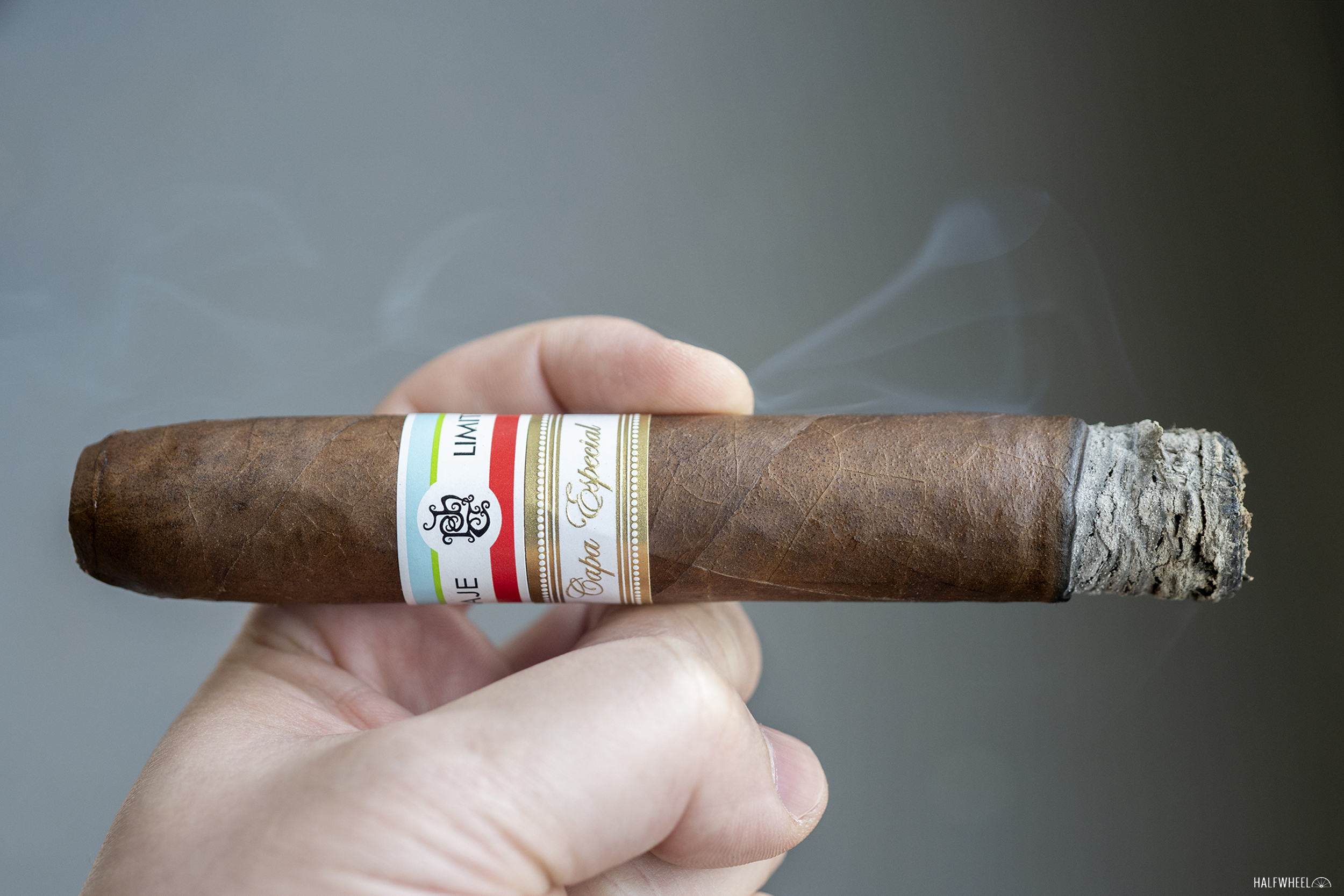
During the second third of each cigar, the profile begins to get progressively drier. I don’t think it happens at the same time during each cigar, but there’s a point that each crosses and the dryness begins to pick up at a consistent rate. That change ushers in sesame seed as the leading flavor. For a time, the sesame seed sensation is still joined by most the flavors of the first third, but after the halfway mark, most of those flavors begin to drop off. A mineral-laden earthiness, oregano and creaminess are the secondary flavors that are left at the end of the second third, but there’s also generic harshness emerging as I get closer to the final third. Unfortunately, the finish sees the harshness increase even more. It’s not overly harsh, but compared to the first third, the profile is in a very different place. Predictably, my mouth also tastes like I might have just consumed a sesame seed-bagel along with some herbs and rocks. Retrohales have a soy sauce flavor leading the sesame seed and white pepper. When the smoke is being forced through my nose, the profile is neither as dry not harsh as it is when the smoke is just in my mouth, at least until the finish. After retrohaling, the harshness picks up even more in my mouth and tastes like the cigar has been relit multiple times. That said, none of the three cigars I smoke have gone out and therefore need to be relit, though each needs at least one touch-up to help with smoke production. Flavor is full, body is medium-full and strength is medium-full.
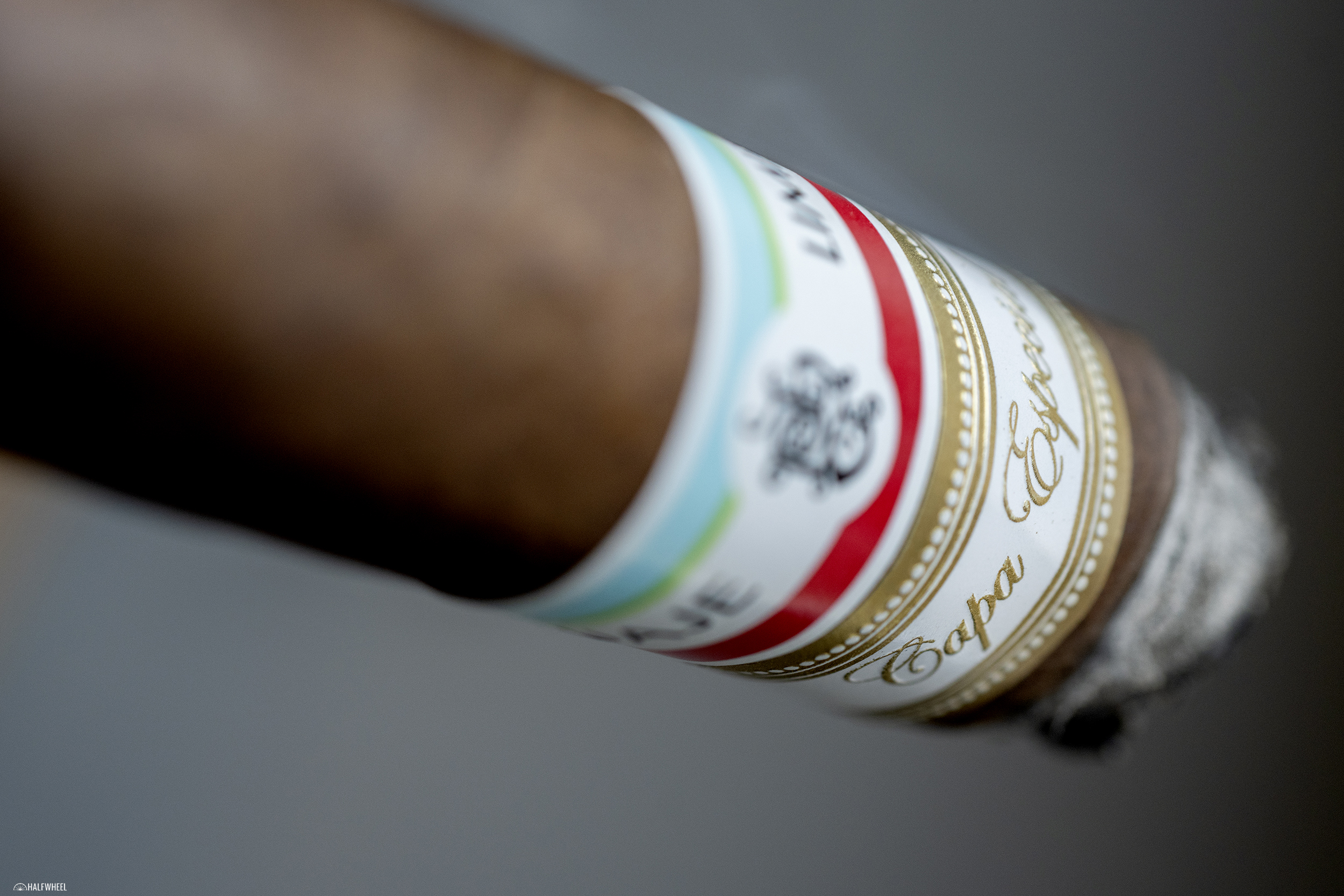
The three Tatuaje Limited DB Capa Especials I smoke take two different paths for the final third. One is enjoyable, at least for a decent chunk of the final third. The last cigar I smoke tastes like Kewpie mayonnaise over some bitterness, harshness, nuttiness, sesame seeds, black pepper and leather. The finish shows off the mineral-laden earthiness which leads black pepper, burnt woods and more of the harshness. Retrohaling shows a surprising amount of pepper—both red pepper and white pepper—along with some amaro flavors. I can’t really pick up that much of a change in terms of a difference in flavors between the retrohale and the accompanying finish, but the texture of the flavors changes in the retrohales and the flavors seem more geographically limited—they are in specific places—than before. The other two cigars rapidly get to a flavor profile that I do not want to keep smoking. Right around the point where the main band needs to be removed, the profile has gotten dry, harsh and bitter. It doesn’t help that salted pasta water and vegetal flavors are also joining the fray. Similar to the retrohale’s finish during the second third, it oftentimes taste like a cigar that has gone out and been relit multiple times, something that never happens. It’s a bit tough to score because the final third is a mixed bag, starting good and progressively getting worse, though because there’s a linear relationship between smoking further and it getting harsher, it’s somewhat of a choose your adventure of how bad you want to let it get. Without question, the final cigar I smoke sees this progression start much later, which helps the overall experience immensely. Flavor is full, body is medium-full and strength is medium-full. Touch-ups are still required to help with smoke production. Predictably, the two worse-tasting cigars are also the ones that suffer from more smoke production issues, to the point where it’s difficult for me to retrohale on a lot of puffs because of a lack of smoke volume.
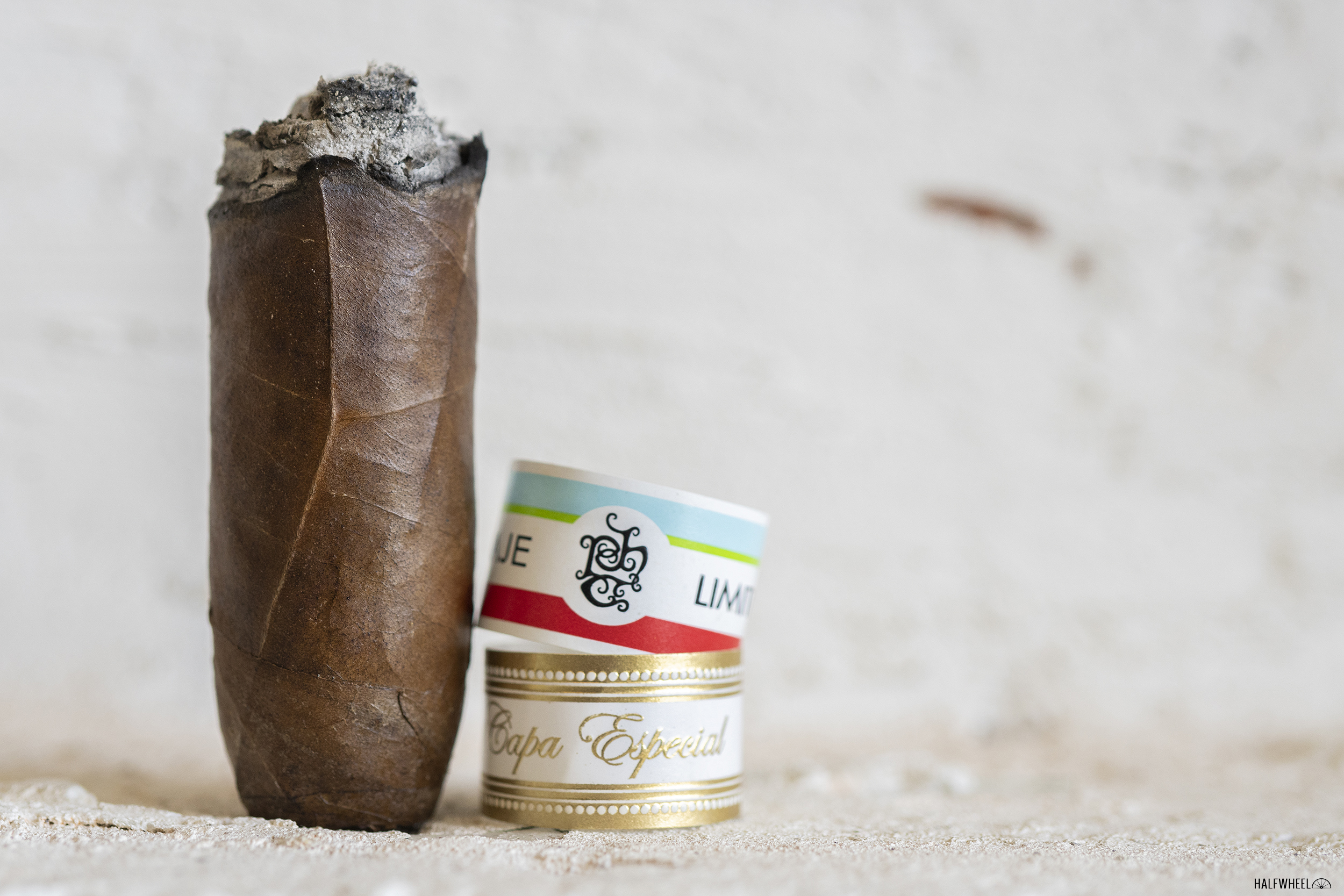
Final Notes
- It’s been a while since I smoked a cigar that seemingly fell off a cliff or a hit wall quite like this. The final third notes from my first cigar started with “perplexed as to what happened.” I still am. While there certainly were hints during the second third of the uptick in dryness and mild amounts of harshness, there was a dramatic change in the final third, particularly for two cigars. While harshness and dryness—at varying rates—had been entering the fray, there’s a point each cigar crossed where it seems like every puff was harsher and more bitter than the one before.
- During the second and third cigars, I focused a lot more about when and where the change happened and tried to see if preemptively touching up the burn line or smoking faster would help. It didn’t make a difference in the second cigar, which ended up being slightly less enjoyable than the first. The final cigar was just delayed as to when it crossed the line. After each puff was getting progressively harsher, I put the cigar down with about an inch-and-a-half remaining.
- While smoking some cigars, I find that while the points between two inches and one inch of cigar remaining are bad, a cigar can open up around the inch mark and improve. I gave one cigar the chance to do that and it didn’t happen.
- Scoring the final thirds of the first two cigars was challenging because the range of experiences was quite wide. I ended up settling in the middle of the range, which would be a below-average cigar experience, albeit, not the same number for each cigar. I think it’s worth reiterating, unlike a lot of harsh and bitter cigars, the really bad parts didn’t happen until pretty late into the cigar. That said, it happened before the point where I would have found this to be acceptable. There were nearly two inches of each cigar left during the first and second samples when the harshness became overwhelming.
- I’m not sure what sort of knowledge one would know to diagnose this issue without being in the factory, where you could see how the cigars are bunched and smoke the individual tobacco leaves. Given how the tip of the cigar is formed—it’s not as aggressive of an angle as many cigars—it’s not like I was getting to the point where I was smoking through the taper, so that ruled out the most obvious explanation: some issue with the combustion because of the taper.
- Speaking of the taper, because of the less aggressive angle and the large ring gauge, the end result is that I am smoking a cigar that is pretty thick at the cap. It’s certainly not the full 58 ring gauge experience, but the mouthfeel is not at all like smoking a 50 ring gauge toro.
- Cigars like this are a great reminder about the difference between smoking cigars and reviewing cigars. If not for a review, I would have given this cigar a few minutes to improve and then stopped smoking it. Maybe, I would have smoked a second one to see if the first one was just dud, but I can’t see myself smoking a third consecutive cigar after the first two experiences. If I was a consumer, the third cigar would have stayed in the humidor for a lot longer than 24 hours. Because this is a cigar review, I’m guessing I smoked through a combined 45 minutes of very harsh cigars because the process calls me to finish each cigar to a certain point, not the point in which I’d personally like to be done. I certainly wouldn’t have smoked one of these to the one-inch mark just to see what happens.
- On the positive side, the flavor profile is remarkably clean and crisp, at least until the dryness and harshness enter the fray. Some of that is probably the chemistry behind the tartness, but this is way above my head as far as flavor science is concerned.
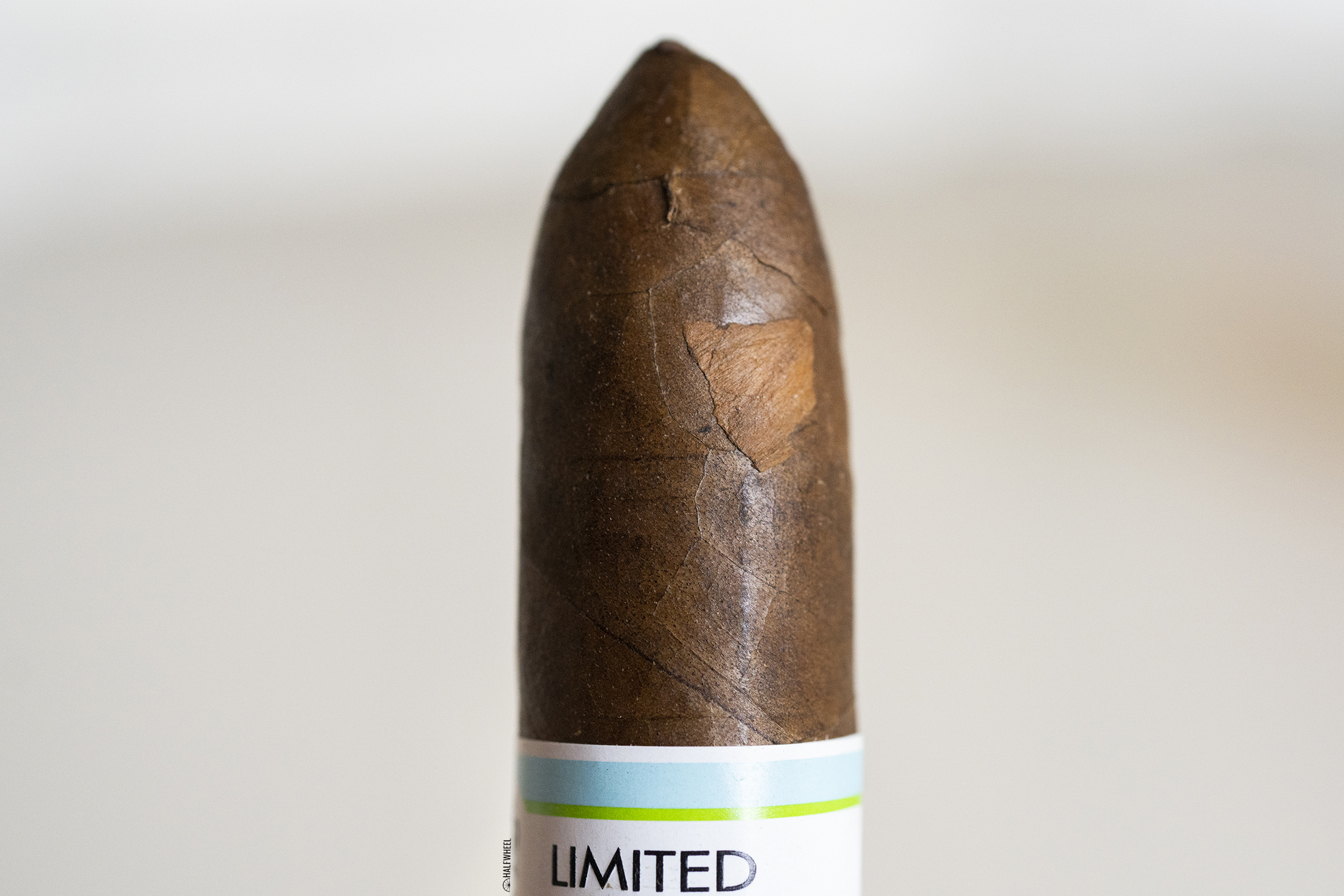
- Here’s what the aforementioned patch job on the first cigar looked like. I do not think this had an iota of impact on what took place with the flavor.
- I have not smoked the new version of the regular Tobacco Plaza DD, but Brooks Whittington really liked it.
- More than a decade ago, I was with Brooks on his patio watching him smoke the original Tobacco Plaza DD, and the nicotine really did get to him.
- Cigars for this review were purchased by halfwheel.
- Final smoking time averaged two hours and 40 minutes.
- Site sponsors Atlantic Cigar Co., Cigars Direct and Corona Cigar Co. carried the Tatuaje Limited DB Capa Especial, though all three are sold out at the time of publishing.
85
Overall Score
While not the best Tatuaje I’ve ever smoked, the first two thirds of the Tatuaje Limited DB Capa Especial were enjoyable. For a number of reasons—flavor, ring gauge, price—I’d prefer the LLE Capa Especial and T110 Capa Especial over the positive parts of the Tatuaje Limited DB Capa Especial, but the first half or so of this cigar was quite good. However, even at its best, the final third was a notable letdown. Unfortunately, two out of three times, the final third ended about as bad as I’ve ever tasted from a Tatuaje. I have smoked a lot of Tatuajes over the years—this is the 49th review of a Tatuaje/L’Atelier cigar—and based on my experiences, the bar that the company has established is about as high as any company. When there has been an occasional miss, it’s almost always tied to a glaring construction issue—usually a draw issue—that then impacts the flavor and the score. In this case, there certainly weren’t glaring construction issues prior to the final third, and even when the issues started, they seemed relatively minor, at least as far as construction was concerned. However, I can’t help but think there was a lot more going on underneath the surface—i.e., within the filler itself—because very few cigars can flip a switch quite like these did. The good news is, the harshness and bitterness weren't a problem until close to the end; unfortunately, getting to the end without them becoming overwhelming wasn't possible.
I am an editor and co-founder of halfwheel.com/Rueda Media, LLC. I previously co-founded and published TheCigarFeed, one of the two predecessors of halfwheel. I have written about the cigar industry for more than a decade, covering everything from product launches to regulation to M&A. In addition, I handle a lot of the behind-the-scenes stuff here at halfwheel. I enjoy playing tennis, watching boxing, falling asleep to the Le Mans 24, wearing sweatshirts year-round and eating gyros. echte liebe.







